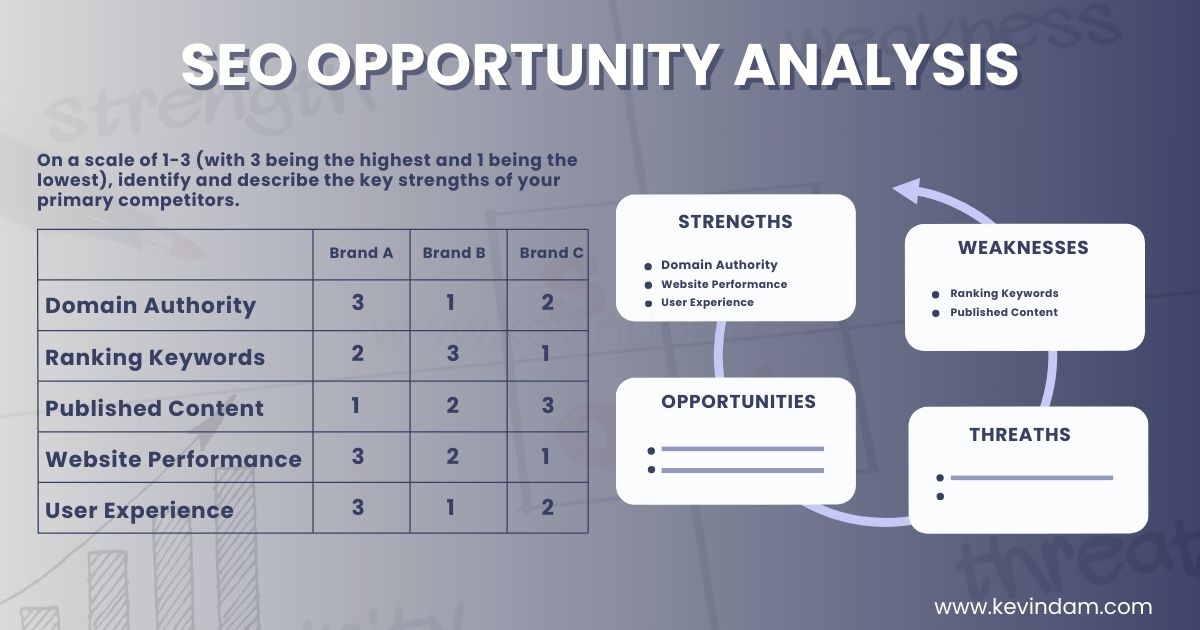
Last Updated February 1, 2024
Kevin transitioned from banking and finance to digital marketing, specialising in SEO since 2010. His experience includes improving SEO results for websites in finance, insurance, e-commerce, medical & clinics, and B2B services. Kevin thrives in remote work environments, leading a 33-member team across seven countries. He enhances productivity with streamlined processes, Google Sheets automation, no-code platforms, and AI integration. His expertise in SEO, technology, and remote team management enables him to develop training programs that equip individuals and businesses with the skills to solve complex business challenges. Kevin's actionable learning approach ensures practical application and continuous development.
Low-code vs No-code vs High code: Differences & Examples
The world is already in that era where people have a lot of innovations and technologies to help speed up the action. Every venture or new company is always looking to provide solutions and find the right problems to solve. The demand for automation is a consequence of the preference to make work more efficient. Each enterprise starts with creating a working system, and what better way to do it than to find the most optimal way to handle processes?
The need for effective platforms to create digital systems comes with the preference for automation. There are various levels of development for all types of developers, namely low-code, no-code and high code. Before a company creates and automates processes, it’s best to choose the level of development that can handle all the business needs. Each tier poses its advantages and disadvantages.
Low-code development

There comes the point between professional expertise and informal coding, where basic knowledge and information coincide. Low-code development is the middle point for people who know a significant amount of information to cover the basics. Low-code platforms allow users to focus on the more visual aspect of the system while leaving the complexities of coding behind.
Low-code development strikes a balance between the manual labour of coding and eliminating the need to code at all. It’s the right place for beginners looking towards an entry into programming but slowly learning the ropes of the other aspects of the development process.
Advantages of low-code
- Fewer complications
Low-code presents fewer complications for users who are starting with low-code platforms. Learning the expertise of any programming language and designing the best logic and cases takes years. Low-code platforms and tools take away that pain point for businesses looking for a faster way to digitise processes and systems.
- Affordable tools
Most low-code platforms and tools aren’t very costly in the beginning. It’s preferable for small businesses looking to save expenses to keep human resources and start with running operations. There’s always room for error in developing the business; however, it would hurt less if, for example, the business spent a monthly subscription rather than complete departments.
- High collaboration.
All people in a team have different levels of knowledge when it comes to technology. People who are good at churning numbers may have less experience designing systems. Low-code development provides an opportunity for people to work together on common ground. It’s not uncommon to find marketing people working with a data analyst team in low-code projects.
Potential problems with low-code
- Functionality issues.
Low-code components already have a limitation. Since the nature of these platforms is to provide less code work, all elements are given by the platform. All platforms are unique, and one of the ways that these platforms differ is the number of components present. For example, users may find more chart types or table setting modifications on one platform than on the other.
- Security and safety concerns.
Developers who create systems own the project they create. The case is not the same for people creating on another platform, deploying systems, and using external applications for the processes. As such, it’s always a good idea to take into consideration the current performance of the platform. The last thing users need is an unstable platform from the people managing it.
- Vendor lock-in.
Users are pretty set in the platform they choose to subscribe to. No matter the issue and concern, migration to a different platform may not be as simple as signing up. It’s best always to check the fine print and the terms and conditions of the platform for this matter. Choosing another low-code platform may entail recreating the same system from scratch.
Example: Mendix
Mendix is a low-code platform that has grown in popularity over the years. The platform has a lot of products to offer, focusing on low-code development and deployment. Mendix has worked with over 4000 companies globally up to date. Some of these companies are the most prominent names across industries.
Mendix has much more to offer beginners who aim to become citizen developers. The platform also provides products for making mobile applications with minimal coding required. As the app also integrates a function for AI, companies can make changes in the system with smarter, more informed, data-driven input.
There’s no need to waste more time or resources in keeping business operations running correctly.
No-code development

On top of low-code tools, no-code tools are available for users with zero coding knowledge. Whereas low-code development is a good starting point for people with basic knowledge, no-code caters to non-technical users. No-code platforms are purely drag-and-drop. Users of the platform can’t modify anything in the back-end structure of each element or component.
Citizen developers can begin projects in no-code platforms to understand how workflow automation processes are created. The rise in both low-code and no-code is becoming more prominent as Gartner projected that both types of development raise total revenues of up to 13.8B USD in 2021 from 11.2B USD in 2020.
Advantages of no-code
- Zero coding skills
Some low-code platforms may require minimal coding skills to modify some aspects of the visual editors of the platform. While this can serve as a way to customise some things about each element, it’s different for no-code. No-code elements are completely set, and no-code platforms rely on configurations and simple input to work.
For people who don’t have any idea about software development, starting with basics in no-code can bridge that gap.
- Focused processes
Since no-code doesn’t require coding, complications during the project development won’t go too far. No-code tools and software are ideal for solving problems of individual departments. One way to scale the function of no-code projects is to integrate some external applications into the elements. No-code is preferable for users solving problems with simple solutions.
- Visual interface only
The truth is, not all people are built for coding and creating software the traditional way. It takes a lot of knowledge and skill to truly grasp the abilities of programming languages. Nevertheless, what traditional development has in terms of function and customisation, no-code has in visual ability. No-code platforms help increase skills in process creation and design.
Potential problems with no-code
- High modularity
Modularity is often a significant benefit for many users. The ability to change elements and components without alteration guarantees a lot of backward compatibilities. Nevertheless, modularity becomes a potential problem when businesses seek to scale towards more custom solutions. In no-code, what you see in the platform is what you get in deployment.
- Fewer opportunities to learn about coding
One of the best things about low-code tools is the opportunity to learn more about the world of professional coding through simple, basic coding. That’s not available in no-code development as there is no way to change anything in the platform. Projects are precisely how you design them, with set functions and features. There’s no room for tweaking, and no-code suits front-end development best.
- Enclosed system
No-code has more restrictions given that the products in the platform are already set, without any chance for change. The only way users can change these elements is by changing the way they design processes in the visual interface of the project. No-code may lack access to more high-end plug-ins and complex integrations.
Example: Shopify
The e-commerce site Shopify is a no-code platform that has transformed the digital retail landscape. Businesses can create retail e-commerce sites with Shopify. Shopify offers a website builder that connects to about 6000 external applications online. Users can also choose from various themes available on the platform.
Shopify also offers Marketing and SEO products to optimise the websites created on the platform. No-code platforms like Shopify, have all the elements for online retail websites. Users only need to drag and drop blocks across the canvas to create the structure and design of the site.
High code development

High code development equates to what citizen developers may refer to as traditional coding. The definition of high code development is self-explanatory. It’s traditional development where professionals handle heavy volumes of project development in any programming language.
Some languages like Python, JavScript and TypeScript continue to excel in 2021 in terms of market shares despite the introduction of other languages to developers.
High code development highlights the amount of manual labour it takes to create software, programs or applications. Project cycles for high code development often reach months and sometimes years to complete. Nevertheless, high code development is still a solution to business needs, with programming languages competing with large software developer markets.
Advantages of high code
- High levels of customisation
High code development offers a truly unique product after the project development process. Since professionals are starting from scratch, businesses get to voice out expectations from the project. Developers in the project can create the product by using programming languages. Teams can create custom solutions that cater to all aspects and needs of the business.
- High scalability
Low-code and no-code development are notorious for having limitations in scalability. Many deployed programs and software are solutions that can efficiently cater to the current needs of the business. When the business undergoes changes and requires some shifts in demand, these programs won’t hold up well.
On the other, with hand high-code products, developers can adapt the code faster to the changing demands of the business.
- Ownership of source code
Code ownership is one of the best advantages of high code development. With low-code and no-code, developers entrust the projects to a third-party, outsourced platform that holds everything. There may be issues on platform migration, which are not present in high-code. Businesses get to own the project in the end. On top of the deployed systems as the final product, the code is accessible to the business.
Potential problems with high code
- More expensive than no-code and low-code
With high scalability, better custom options, and fewer ownership issues, the downside is that high-code costs more. Employing the expertise of seasoned developers costs a lot because businesses are paying for the skill of the people creating high-code products. Moreover, maintaining the same team to keep handling the projects can become a considerable expense for the business in the long run.
- Isolation of human resource
Professional developers often focus on one project at a time. Businesses often have many menial tasks and processes easily outsourced to automation. Teams can’t create other solutions to business needs to maintain the big high-code products catering to larger business needs. Instead of finding solutions and innovations to optimise the business, high-code developers are isolated to one project alone.
- Steep learning curve
Most seasoned and skilled software developers may have finished a Bachelor’s degree and even take up a Master’s degree before becoming professional developers. It takes time and a lot of experience to truly master a certain language, let alone use that language to create and deploy large business solutions without error. It’s a known reality that high-code development implores learning on a steep learning curve.
Example: Programming languages like JavaScript and Python
Unlike low-code and no-code development, high-code development utilises programming languages for software creation. It takes time and experience to maximise the functionalities and features developers can write in code.
Conclusion: Which type of software development fits your company best?
The decision falls on which type of development any business should choose. To summarise different tiers of development, here are some key points for any business to note:
- It’s best to employ no-code tools and platforms to create specific, minor processes that won’t require change sooner. For business operations that don’t need a lot of scaling and unique solutions, no-code platforms can already be a good creation ground for simple, functional, and low-cost systems.
- Low-code tools are best for businesses like startups, with specific people in different roles. With basic coding knowledge, low-code is a flexible option for people to create systems that have high levels of integration with other applications. Low-code caters to more functional, wider-scoped, and complex business needs.
- Lastly, high-code development or traditional development is the foundation of the entire software development industry. High-code development is specifically for companies looking for complicated, heavy and tailor-fit systems.
Kevin Dam
Kevin transitioned from banking and finance to digital marketing, specialising in SEO since 2010. His experience includes improving SEO results for websites in finance, insurance, e-commerce, medical & clinics, and B2B services. Kevin thrives in remote work environments, leading a 33-member team across seven countries. He enhances productivity with streamlined processes, Google Sheets automation, no-code platforms, and AI integration. His expertise in SEO, technology, and remote team management enables him to develop training programs that equip individuals and businesses with the skills to solve complex business challenges. Kevin's actionable learning approach ensures practical application and continuous development.




























